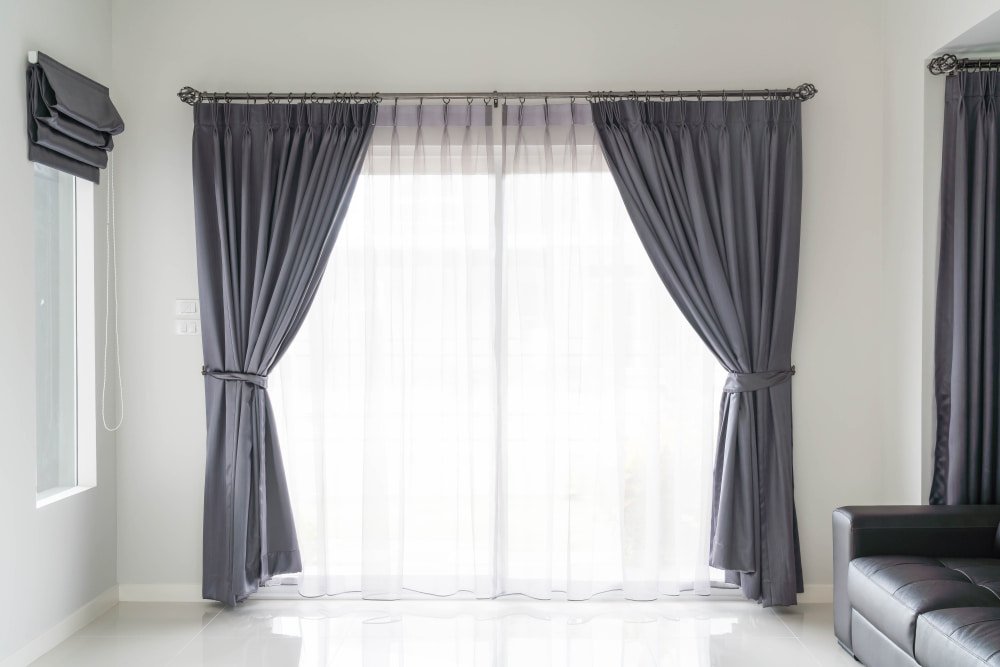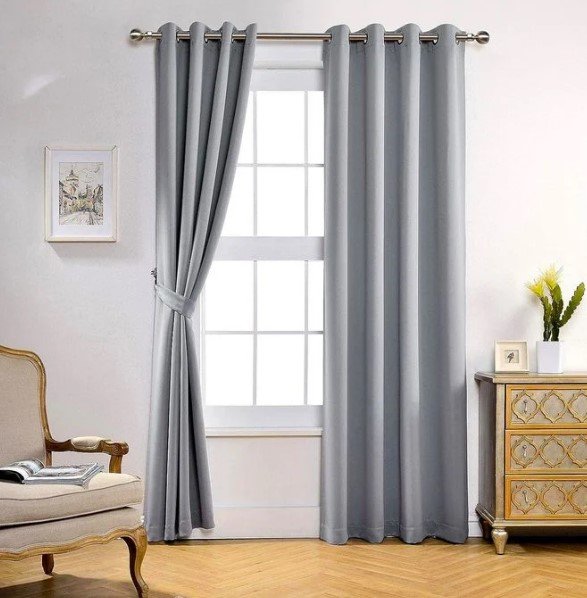Have loud noises from outside your house ever kept you up at night? Or perhaps you’ve had trouble working or studying because sounds from other rooms or the street below kept getting in the way. If so, you’re not alone. Excessive noise can be a major nuisance, impacting our ability to relax, sleep, and focus. Fortunately, there are solutions available to help minimize unwanted noise, one of which is soundproof curtains.
Soundproof curtains do a great job. They absorb and keep out noise from the outside, making your home or workspace calm and quiet. But what’s the secret inside these cool curtains? This piece will let you in. We’ll chat about the handy facts behind these curtains, the stuff that put them together, and why they’re doing such a great job at keeping noise away.
Understanding Sound and Noise
Let’s simplify how do soundproof curtains work by first understanding sound and noise. Sounds are just energy that moves in air (or anything else) like waves. These waves come from sound makers like speakers, musical things, or even people talking.
The noise is a bit different. It’s a sound that we don’t want to hear. It’s too loud or it bothers us. Noise happens in lots of places, like busy roads, worksites, loud music, or even at home with machines running.
The Principles of Soundproofing
Soundproofing involves minimizing the transfer of sound between different spaces. Effective soundproofing involves several principles such as absorption, blocking, and damping.
Absorption:
Sound energy transforms into heat energy through absorption. This reduces the sound that bounces around in a room. Special fabrics are used in soundproof curtains. They absorb sound waves, preventing them from echoing in the room.
Blocking:
Sound blocking is when you stop noise from getting through. It’s like creating a wall against sound. Soundproof curtains do just that. They’re made of thick stuff and help stop sound waves from getting in or out of a room.
Damping:
Now, let’s talk about reducing vibrations. Vibrations can make sound travel through hard things like walls or floors. Soundproof curtains can help control these vibrations. In the end, this makes the noiseless.
Types of Materials in Soundproof Curtains
The efficiency of soundproof curtains is greatly influenced by the materials utilized in their construction. These are some of the typical materials you’ll find in top-notch soundproof curtains:
- Mass-Loaded Vinyl (MLV): MLV is a dense, flexible material that excels at blocking sound waves. Commonly utilized as a central layer in soundproof curtains, creating a barrier that blocks sound transmission.
- Fiberglass: Fiberglass is a great sound-absorbing material often found in soundproof curtains. It assists in capturing and dispersing sound waves, which decreases their potential to reflect and reverberate in space.
- Foam: Acoustic foam is a commonly used material in soundproof curtains. This material excels at absorbing sound waves and preventing their reflection into space.
- Fabrics: The outer layers of soundproof curtains are usually crafted from dense, tightly woven fabrics like velvet or suede. These fabrics enhance the sound-blocking abilities and add a stylish and visually appealing look.
Explanation of How Do Soundproof Curtains Work
Soundproof curtains have a special feature. They use three things to stop sound from moving around too much – absorption, blocking, and damping. Here’s a breakdown of how they do what they do:
Absorbing Sound:
When sound waves come into a room, the first thing they hit is the soundproof curtain. The curtain is usually made with something that absorbs sound, like fiberglass or acoustic foam. These things grab the sound waves and spread them out. This stops the sound from bouncing around the room and makes it less noisy.
Blocking Sound:
After the sound is spread out, whatever is left hits the curtain’s inner part made of mass-loaded vinyl (MLV). This part is thick and dense. It stands in the way of the sound waves, stopping them from moving into the next room or area.
Vibration Damping:
Soundproof curtains don’t just block noise. They can also cut down on the shakes and vibrations that make noises go through solid things like walls or floors. The stuff the curtains are made of can quiet down these vibrations, making everything even more quiet.
Additional Sound Absorption:
Some noises might get through the main part of the curtain. But there’s another layer, made from stuff like foam or fiberglass, ready to catch them on the other side. This last layer can grab and quiet any leftover noise energy, making sure the curtain blocks as much noise as possible.
Factors Affecting Soundproof Curtain Effectiveness
While soundproof curtains can be highly effective at reducing noise levels, their performance can be influenced by several factors:
- Curtain Quality: The efficiency of soundproof curtains depends on their material quality. Noise reduction is usually better with dense MLV and high-performance sound-absorbing materials.
- Installation and Sealing: You need to install and seal soundproof curtains correctly for maximum noise blocking. Letting gaps or holes exist will let noise slip through.
- Room Acoustics: The room’s acoustics can also affect how well the soundproof curtains work. Consider adding acoustic panels or carpeting to rooms with hard, reflective surfaces for better noise reduction.
- Sound Source and Frequency: Soundproof curtains can be affected by the type of sound source and its frequency. Lower-frequency sounds, like bass from music or machinery, may be trickier to block than higher-frequency sounds.
Conclusion
Soundproof curtains serve a practical role. But, how do soundproof curtains work? Actually, they block unwanted noise and make spaces quiet and comfy. They’re made from absorbing materials, thick sound-stopping layers, and vibration-softening properties. These features effectively reduce noise from outside. Plus, they can help you get a good night’s sleep, focus better, and enjoy more privacy.
Several factors affect how well soundproof curtains work. It includes curtain quality, setup, room sound dynamics, and types of noise. But they’re a flexible and visually appealing way to lessen noise. They’re great for homes, productive work areas, or purpose-built recording studios. So if loud noise is a problem, soundproof curtains could be your answer.



